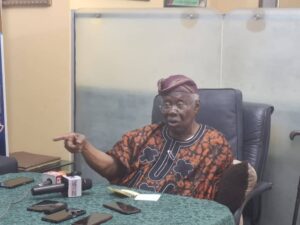COVER
Fibromyalgia, Causes, Symptoms, Causes, Treatment

Fibromyalgia is a disorder characterized by widespread musculoskeletal pain accompanied by fatigue, sleep, memory and mood issues. Researchers believe that fibromyalgia amplifies painful sensations by affecting the way your brain and spinal cord process painful and nonpainful signals.
Symptoms often begin after an event, such as physical trauma, surgery, infection or significant psychological stress.
In other cases, symptoms gradually accumulate over time with no single triggering event.Women are more likely to develop fibromyalgia than are men. Many people who have fibromyalgia also have tension headaches, temporomandibular joint (TMJ) disorders, irritable bowel syndrome, anxiety and depression.
While there is no cure for fibromyalgia, a variety of medications can help control symptoms. Exercise, relaxation and stress-reduction measures also may help.
Symptoms of fibromyalgia can be confused with those of arthritis, or joint inflammation. However, unlike arthritis, it has not been found to cause joint or muscle inflammation and damage. It is seen as a rheumatic condition, in other words, one that causes soft tissue pain or myofascial pain.
According to the National Institute of Arthritis and Musculoskeletal and Skin Diseases (NIAMS), around 5 millionTrusted Source adults aged 18 years or over in the United States experience fibromyalgia, and 80 to 90 percent of fibromyalgia patients are women.
Fast facts on fibromyalgia:
Fibromyalgia causes widespread pain, fatigue, and other types of discomfort.
Symptoms resemble those of arthritis, but fibromyalgia affects the soft tissue, not the joints.
The cause is unknown, but risk factors include traumatic injury, rheumatoid arthritis and other autoimmune disorders, such as lupus, and genetic factors.
There is no cure, but medications, exercise, acupuncture, and behavioral therapy can help relieve symptoms and improve sleep quality.
Exercise
A combination of aerobic exercise and resistance training, or strength training, has been linked to a reduction in painTrusted Source, tenderness, stiffness, and sleep disturbance, in some patients.
If exercise is helping with symptoms, it is important to maintain consistency in order to see progress. Working out with a partner or personal trainer may help to keep the exercise program active.
Some patients have experienced improvements in their quality of life after starting acupuncture therapy for fibromyalgia. The number of sessions required will depend on the symptoms and their severity.
One study found that 1 in 5 people with fibromyalgia use acupuncture within 2 yearsTrusted Source of diagnosis. The researchers concluded that it may improve pain and stiffness. However, they call for more studies.
Behavior modification therapy
Behavior modification therapy is a form of cognitive behavioral therapy (CBT) that aims to reduce negative, stress- or pain-increasing behaviors and improve positive, mindful behaviors. It includes learning new coping skills and relaxation exercises.
Causes
The exact cause of fibromyalgia is unclear. However, current thinking in the field of Rheumatology suggests that fibromyalgia is a problem with central pain processing in the brain, where there may be an increased sensitivity or perception of pain to a given trigger.
There is a range of likely risk factors, including: a stressful, traumatic physical or emotional event, such as a car accident, repetitive injuries, rheumatoid arthritis or other autoimmune diseases, such as lupus, central nervous system (CNS) problems.
Fibromyalgia may also be hereditary. Females who have a close relative with fibromyalgia have a higher risk of experiencing it themselves.
People with rheumatoid arthritis, lupus, or spinal arthritis, known ankylosing spondylitis, have a higher riskTrusted Source of developing fibromyalgia, as do patients with some other rheumatic diseases.
Many researchers believe that repeated nerve stimulation causes the brain and spinal cord of people with fibromyalgia to change. This change involves an abnormal increase in levels of certain chemicals in the brain that signal pain.
In addition, the brain’s pain receptors seem to develop a sort of memory of the pain and become sensitized, meaning they can overreact to painful and nonpainful signals.
There are likely many factors that lead to these changes, including:
Genetics. Because fibromyalgia tends to run in families, there may be certain genetic mutations that may make you more susceptible to developing the disorder.
Infections. Some illnesses appear to trigger or aggravate fibromyalgia.
Physical or emotional events. Fibromyalgia can sometimes be triggered by a physical event, such as a car accident. Prolonged psychological stress may also trigger the condition.
Diagnosis
It can take some time to confirm a diagnosis of fibromyalgia because the symptoms resemble those of other conditions, such as hypothyroidism. These conditions must first be ruled out before diagnosing fibromyalgia.
Pain and symptoms over the previous week, out of 19 identified body parts, plus levels of fatigue, unsatisfactory sleep, or cognitive problems, symptoms that have been ongoing for at least 3 months, no presence of another health problem that would explain the symptoms.
Previously, ‘tender points’ were used to diagnose the condition. However, these are no longer recommended to aid the diagnosis of fibromyalgia.
Symptoms
The primary symptoms of fibromyalgia include Widespread pain and Fatigue.
Widespread pain
The pain associated with fibromyalgia often is described as a constant dull ache that has lasted for at least three months. To be considered widespread, the pain must occur on both sides of your body and above and below your waist.
Fatigue
People with fibromyalgia often awaken tired, even though they report sleeping for long periods of time. Sleep is often disrupted by pain, and many patients with fibromyalgia have other sleep disorders, such as restless legs syndrome and sleep apnea.
Cognitive difficulties. A symptom commonly referred to as “fibro fog” impairs the ability to focus, pay attention and concentrate on mental tasks.
Fibromyalgia often co-exists with other conditions, such as:
Irritable bowel syndrome, Chronic fatigue syndrome, Migraine and other types of headaches, Interstitial cystitis or painful bladder syndrome,Temporomandibular joint disorders, Anxiety, Depression
Risk factors
Your sex. Fibromyalgia is diagnosed more often in women than in men.
Family history. You may be more likely to develop fibromyalgia if a parent or sibling also has the condition.
Other disorders. If you have osteoarthritis, rheumatoid arthritis or lupus, you may be more likely to develop fibromyalgia.
Complications
The pain, fatigue, and poor sleep quality associated with fibromyalgia can interfere with your ability to function at home or on the job. The frustration of dealing with an often-misunderstood condition also can result in depression and health-related anxiety.
Treatment
Around 20 percent of people with fibromyalgia try acupuncture within the first 2 years. It may work, but more research is needed.
Medical attention is needed because fibromyalgia can be difficult to manage. As it is a syndrome, each patient will experience a different set of symptoms, and an individual treatment plan will be necessary.
Treatment may include some or all of the following: an active exercise program, acupuncture, psychotherapy, behavior modification therapy, chiropractic care, massage, physical therapy, low-dose anti-depressants, although these are not a first-line treatment.
People with fibromyalgia need to work with their doctor to come up with a treatment plan that provides the best results.
Drugs
Drugs may be recommended to treat certain symptoms.
These may include over-the-counter (OTC) pain relievers. However, the European League Against Rheumatism (EULAR) issued a recommendation against using non-steroidal anti-inflammatory drugs (NSAIDs) to treat fibromyalgia in their updated 2016 guidelines.
Antidepressants, such as duloxetine, or Cymbalta, and milnacipran, or Savella, may help reduce pain. Anti-seizure drugs, such as gabapentin also known as Neurontin, and pregabalin, or Lyrica, may be prescribed.
However, a review has suggested that patients often stop using these drugs because they are not effective in relieving pain or because of their adverse effects.
Patients should tell the doctor about any other medications they are taking to avoid side-effects and interactions with other drugs.
COVER
Yahaya Bello to Spend Christmas, New Year in Kuje Prison

By Mike Odiakose, Abuja
Immediate past governor of Kogi State, Yahaya Bello will spend the 2024 Christmas and 2025 New Year days in Kuje prison, Abuja, following refusal of his bail application by the Federal Capital Territory High Court.
Justice Maryann Anenih yesterday adjourned the case until Jan.
29, Feb. 25, and Feb. 27, 2025 for the continuation of the hearing.The former governor is standing trial, along with two others, in an N110 billion money laundering charge brought against him by the Economic and Financial Crimes Commission (EFCC).
Justice Anenih had refused to grant a bail application filed by Bello, saying it was filed prematurely.
The judge admitted Umar Oricha and Abdulsalam Hudu, to bail in the sum of N 300 million each with two sureties.
Justice Anenih, while delivering a ruling said, having been filed when Bello was neither in custody nor before the court, the instant application was incompetent.
“Consequently, the instant application having been filed prematurely is hereby refused,” she said.
Recalling the arguments before the court on the bail application, the judge had said, “before the court is a motion on notice, dated and filed on Nov. 22.
“The 1st Defendant seeks an order of this honourable court admitting him to bail pending the hearing and determination of the charge.
“That he became aware of the instant charge through the public summons. That he is a two-term governor of Kogi State. That if released on bail, he would not interfere with the witnesses and not jump bail.”
She said the Defendant’s Counsel, JB Daudu, SAN, had told the court that he had submitted sufficient facts to grant the bail.
He urged the court to exercise its discretion judicially and judiciously to grant the bail.
Opposing the bail application, the Prosecution Counsel, Kemi Pinheiro, SAN, argued that the instant application was grossly incompetent, having been filed before arraignment.
He said it ought to be filed after arraignment but the 1st Defendant’s Counsel disagreed, saying there was no authority
“That says that an application can only be filed when it is ripe for hearing.”
Justice Anenih held that the instant application for bail showed that it was filed several days after the 1st defendant was taken into custody.”
Citing the ACJA, the judge said the provision provided that an application for bail could be made when a defendant had been arrested, detained, arraigned or brought before the court.
Bello had filed an application for his bail on November 22 but was taken into custody on November 26 and arraigned on Nov. 27.
COVER
Middle Belt Group Tasks FG on Resettlement, Safety of IDPs

From Jude Dangwam, Jos
Conference of Autochthonous Ethnic Nationalities Community Development Association (CONAECDA) has called on the federal government to intensify efforts in the resettlement of displaced persons in their ancestral homes.
The organization made this call at the end of its conference held in Jos, the Plateau State Capital weekend.
Thirty resolutions were passed covering security, economy, politics, governance, culture, languages, human rights and indigenous peoples’ rights among others.
The Conference President, Samuel Achie and Secretary Suleman Sukukum in a communique noted that the conference received and discussed reports from communities based on which resolutions were reached on securing, reconstruction, rehabilitation and returning communities displaced by violence across the Middle Belt.
“After considering the reports from communities displaced by violent conflicts, conference resolved, and called on government to focus on providing security to deter further displacements.
“Call on government to provide security to enable communities to return. Government and donor partners should assist in reconstructing and returning displaced communities,” the communique stated.
The GOC 3 Armoured Division Nigeria Army represented by Lt Col Abdullahi Mohammed said the Nigerian Army is committed to working closely with communities to achieve a crime-free society, urging communities to support them with credible information.
“Security is a collective effort, and we cannot do it alone, the community plays a crucial role in ensuring safety.
“We urge everyone here not to shield or protect individuals involved in criminal activities. Transparency and collaboration, together, with maximum cooperation, we can achieve peace, security, and prosperity for our society,” the GOC stated.
The National Coordinator of CONECDA, Dr. Zuwaghu Bonat in his address at the gathering noted that the theme of this year’s program, Returning, Resettling, and Rehabilitating Displaced Communities, was chosen as a wakeup call on the federal government.
He maintained that the organization is aware that President Bola Tinubu has expressed a commitment to ensuring that displaced communities return to their ancestral lands.
He said similarly, some state governments, including Plateau State, have set up committees to address the lingering matter.
The coordinator however cautioned, “It is critical that we avoid generalizations or profiling. For instance, Not all Muslims are involved in terrorism. The overwhelming majority of Muslims in Nigeria are peaceful and reject extremist ideologies.
“We also know that some terrorists exploit religion to mobilize support or rationalize their actions. However, their atrocities – slaughtering women, cutting open pregnant mothers, and killing children show a profound disregard for humanity and God. Normal human beings would not commit such acts.
“We must also be cautious about lumping banditry with terrorism. While statistics indicate that many bandits and kidnappers may share similar ethnic backgrounds, kidnapping has now evolved into a profit-driven enterprise. This distinction is vital to address the root causes effectively,” he stated.
The Governor of Plateau State, Caleb Mutfwang represented by his Senior Special Assistant (SSA) on Middle Belt Nationalities, Hon Daniel Kwada noted that the conference was apt to addressed the various underlying issues bedeviling the region and its people.
“We in the Middle Belt have long been standing at the crossroads of Nigeria’s complex history. Despite our tireless efforts to stabilize this nation, we have faced immense challenges, including underdevelopment, security issues, and marginalization.
“Often, we are unfairly maligned, but gatherings like this offer a chance to change the narrative.
“Such conferences set the tone for better discussions. They allow us to drive processes that bring development, ensure security, and elevate our people to greater heights,” Mutfwang noted.
COVER
Recapitalisation: SEC Charges Banks to Strengthen Corporate Governance

Securities and Exchange Commission (SEC) has called on banks to reinforce their corporate governance principles and risk management frameworks to boost investor confidence during the ongoing recapitalisation exercise.
Dr Emomotimi Agama, Director-General, SEC, said this at the yearly workshop of the Capital Market Correspondents Association of Nigeria (CAMCAN) held in Lagos.
The theme of the workshop is: “Recapitalisation: Bridging the Gap between Investors and Issuers in the Nigerian Capital Market”.
Agama, represented by the Divisional Head of Legal and Enforcement at the SEC, Mr John Achile, stated that the 2024–2026 banking sector recapitalisation framework offers clear guidance for issuers while prioritising the protection of investors’ interests
He restated the commission’s commitment towards ensuring transparency and efficiency in the recapitalisation process.
The director-general stated that the key to bridging the gap between issuers and investors remained the harnessing of innovation for inclusive growth.
In view of this, Agama said, “SEC, through the aid of digital platform, is exploring the integration of blockchain technology for secure and transparent transaction processing to redefine trust in the market.”
He added that the oversubscription of most recapitalisation offers in 2024 reflects strong investor confidence.
To sustain this momentum, the director-general said that SEC had intensified efforts to enhance disclosure standards and corporate governance practices.
According to him, expanding financial literacy campaigns and collaborating with fintech companies to provide low-entry investment options will democratise access to the capital market.
He assured stakeholders of the commission’s steadfastness in achieving its mission of creating an enabling environment for seamless and transparent capital formation.
“Our efforts are anchored on providing issuers with clear guidelines and maintaining open lines of communication with all market stakeholders, reducing bureaucratic bottlenecks through digitalisation.
“We also ensure timely review and approval of applications, and enhancing regulatory oversight to protect investors while promoting market integrity,” he added.
Agama listed constraints to the exercise to include: addressing market volatility, systemic risks, limited retail participation as well as combating skepticism among investors who demand greater transparency and accountability.
He said: “We are equally presented with opportunities which include leveraging technology to deepen financial inclusion and enhance market liquidity.
“It also involves developing innovative financial products, such as green bonds and sukuk, to attract diverse investor segments.
“The success of recapitalisation efforts depends on collaboration among regulators, issuers, and investors.”
Speaking on market infrastructure at the panel session, Achile said SEC provides oversight to every operations in the market, ranging from technology innovations to market.
He stated that the commission is committed to transparency and being mindful of the benefits and risks associated with technology adoption.
Achile noted that SEC does due diligence to all the innovative ideas that comes into the market to ensure adequate compliance with the requirements.
On the rising unclaimed dividend figure, Achile blamed the inability of investors to comply with regulatory requirements and information gap.
He noted that SEC had done everything within its powers to ensure that investors receive their dividend at the appropriate time.
He, however, assured that the commission would continue to strengthen its dual role of market regulation and investor protection to boost confidence in the market.
In her welcome address, the Chairman of CAMCAN, Mrs Chinyere Joel-Nwokeoma, said banks’ recapitalisation is not just a regulatory requirement, but an opportunity to rebuild trust, strengthen the capital market, and drive sustainable growth.
Joel-Nwokeoma stated that the recent recapitalisation in the banking sector had brought to the fore the need for a more robust and inclusive capital market.
She added that as banks seek to strengthen their balance sheets and improve their capital adequacy ratios, it is imperative to create an environment that fosters trust, transparency, and cooperation between investors and issuers.
The chairman called for collaboration to bridge the gap between investors and issuers to create a more inclusive and vibrant Nigerian capital market.She said: “we must work together to strengthen corporate governance and risk management practices in banks, enhance disclosure and transparency requirements for issuers.” NAN




















